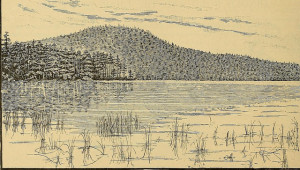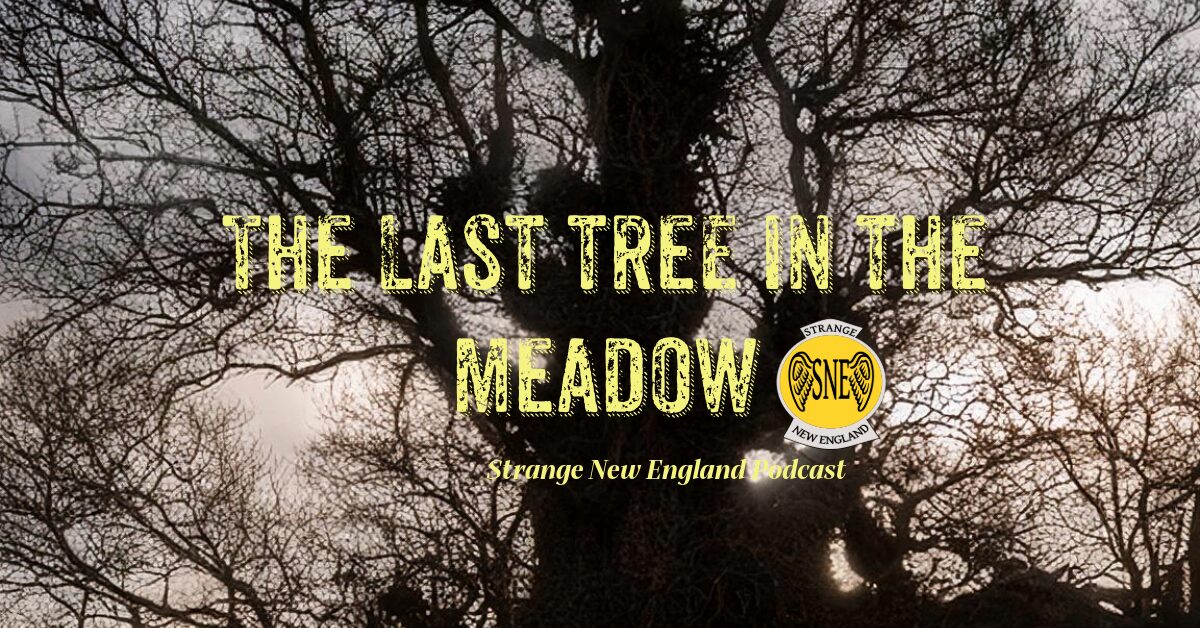
Boundary Pond is a small, unassuming body of water in the northeastern corner of Maine. It is almost touching Quebec, earning the pond it’s name sake. It has an outlet called “Boundary Brook” that meanders from the pond and into Maine, where it fades off into land. It is ideal for “cold-water fish” according to The Maine Department of Inland Fisheries and Wildlife Department, whose website displays a map of this and many more lakes and ponds carved out from ice-age glaciers. According to the Department’s website, “Spawning and nursery habit is limited, but a few brook trout survive to maintain a fishery. Growth is good with no other competing fish species present. The pond is not stocked.”
Many Maine lakes and rivers now rely on fish stocking operations, where fish raised in hatcheries are airlifted over lakes and rivers and dropped into the water. This is said to contribute millions of dollars into Maine’s economy through sustaining fishing pursuits. It also helps sustain Maine’s ecosystem, which has been influenced by Man despite it’s size and condition. Boundary Pond is not one such body of water.
But anyone who goes fishing in this hard to reach spot may not be fishing alone. A lucky fishermen may, according to the legends, hear the splashing of a rare and elusive animal whose fishing technique is as unusual as it’s appearance. It is an animal called the Billdad. It is described as being as large as a beaver and even wields a beaver’s tail. It is also covered with brown fur similar to a beaver’s pelt. It has long hind feet ideal for jumping like a kangaroo, but also are webbed for swimming. They have very short forelegs tucked in like a T-Rex’s arms and the bill and face of a hawk. Sometimes, they are even depicted as having pointed ears.
According to accounts, these creatures are predators that feed on insects and fish. They are ambush predators that use both their hind legs and tail in a strange method of hunting. When they see a fish swim up to catch an insect on the surface of the water, the billdad will leap into the air. As they pass over the fish, they swing down their beaver-like tail and smack the fish hard on it’s head, stunning it. The billdad goes off with this catch, eats it and continues the pursuit like so. It is implied that this is a nocturnal animal that will usually go fishing at night, and hide during the day
Some accounts describe these animals as fierce, but others state this as being too far from the truth. If humans approach, the billdad either leaps for safety or hides. They may do this not only because they know humans are larger and stronger than them, but because legend has it that lumberjacks considered these strange little creatures as a deep woods delicacy. They were said to be far more common back in the days of lumber camps, but their meat was not considered particularly palatable, so they were abandoned as a delicacy, but too late. They are considered to be very rare, like many animals eaten to endangered status.
One account, however, states that billdad meat has a dangeorus effect on humans, making it unfit for consumption for more than just bad taste. Accoring to a story from page 43 of “Fearsome Creatures of the Lumberwoods, 100th edition”, one billdad was somehow caught and eaten at a lumber camp owned by The Great Northern Paper Company. The meat was used to make a dish called Slumgullion (otherwise known as American Chop Suey). The only man to eat this dish was a tote-road swamper, who cleared the unpaved roads of debris for the lumberjacks. After the first and only bite, he grabbed the edge of the dinner table, went rigid, a strange look formed in his eyes and he bolted out of the dining room towards the lake outside the camp. He was said to have jumped 50 feet over the lake, just like a billdad leaping for it’s dinner. But unlike a water-savvy billdad, the man drowned. After that strange and disturbing incident, billdad meat was never on lumber camp menus again, lest they too be driven to think they are a billdad and drown themselves.
This animal is often compared to Australia’s platypus by some accounts, with the idea that of all of New England’s cryptids, this one is mostly likely to be real. In fact, some accounts even state that the billdad is related to The Duck-Billed Platypus. Its appearance and choice of habitat would lend a small spark of plausibility to this theory. When the platypus was first discovered in 1798, most people who saw it thought it was a hoax: a chimera made by a talented taxidermist. Only a drawing and a pelt was brought back to England by Captain John Hunter. But subsequent expeditions to Australia proved that this animal was very real. Today, this animal is alive and well in Australia, being ‘of least conservation concern’ in Eastern Australia.
Cryptozoologists still think that because of the many similarities that the billdad has with the platypus, we may someday find that the billdad is a real marsupial, making it the second marsupial native to North America. Currently, the only native marsupial to North America is the opossum, which is also found in Maine.
So far, however, no billdad living or dead, has ever been found. Visitors who come to Boundary Pond to catch a glimpse of this cryptid leave empty-handed. Some accounts say that even in their heyday, these were shy and hard to hunt. The only testimony that we have that these animals existed is from the tall tales of logging camps where many fantastic yarns were spun by men seeking entertainment in the quiet heart of nature. It is most likely that lumberjacks made up this story to pass the time or mess with the minds of people who lived in towns and cities. After learning about the platypus, they may have thought about the possibility that Maine could have it’s own platypus and let their imagination do the rest from there.
So for now, Boundary Pond is just a quiet, out of the way part of Maine where the sounds of axes and trees falling no longer echo. Silent nature prevails as does great fishing that has not needed man’s intervention to thrive. But, if the stories of the lumberjacks have any credence at all, there may be a chance that any fisherman who comes here for the brook trout may have a strange, furry little companion who keeps itself hidden, save only for when it makes a splashing sound with it’s tail.
Is it someone with a canoe or kayak paddle? Or is it the elusive billdad?
Fearsome Creatures of The Lumberwoods: 100th Edition, Page 43-The Billdad
Cryptids and Monsters: The Billdad
Bruce Van Patter-Mythical American Animals
Maine Department of Inland Fisheries and Wildlife-Franklin County
Video: Maine Forest Service Fish Drops




